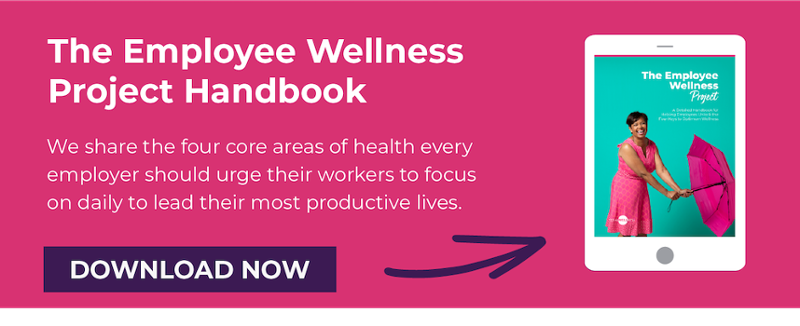 Health insurance options can be confusing.
Health insurance options can be confusing.
In the upcoming weeks, your employees will have to make final decisions on their healthcare enrollment options.
Given that 65% of employees made benefit changes during the last open enrollment period, it’s smart to ensure all your employees fully understand what’s offered before the season closes.
The healthcare open enrollment period is only for a short time, but the benefits and impact it has on your workers lasts for a full year. Making sure they fully understand and use their benefits is essential for a healthy workforce in 2020.
It’s also a perfect time to use open enrollment as a means of building your wellness program and supporting employee health in the upcoming year.
Read on to discover how to help your employees get the most out of their healthcare benefits in 2020.
Trending Benefits for 2020 Open Enrollment
There are always trends to be aware of in the healthcare world. The healthcare enrollment and employee benefits arenas are no exception. The National Business Group on Health identified six trends in particular employers will want to keep in mind for the remainder of the 2020 healthcare open enrollment period:
1. Modest cost increases: Plans will increase in cost about 5% with most large employers still covering 70% for their employees.
2. More choices: The number of employers who only offer high-deductible plans will decrease from 38% to 25%. Data indicates large employers have reduced the number of plan choices over the last few years.
3. Virtual care: Telehealth is expanding with 82% of employers providing virtual mental health services and 60% providing virtual weight management programs. Many health issues have the potential for increased digital management such as prenatal care, sleep issues, diabetes, and cardiac issues.
4. Increased medical decision support: 78% of employers will offer medical decision support tools and second-opinion services. While 73% will provide help with claims assistance by offering virtual solutions. And 60% will offer full-service, high-touch concierge programs so that employees can utilize and navigate the healthcare system efficiently.
5. Mental health: Reducing the stigma of mental health is important to almost half of large employers. Offering online mental health resources and training managers to recognize and address mental health issues are top priorities for employers. Meanwhile, 33% will maintain on-site counselors, and 28% will support digital cognitive behavioral therapy.
6. Quality: 27% of large employers will expand their Centers of Excellence (COE) offerings and work to increase employee utilization. There is also a stronger focus on high-performance networks as well as advanced primary care strategies.
What to Ask Employees Before They Make Changes
Healthcare options and open enrollment can be tricky to navigate. No matter how long your company has been with a particular benefit healthcare provider, there are always annual changes that both employees and employers need to be aware of.
Here’s a look at questions to ask your employees before they enroll, change, or disenroll from health insurance benefits:
Are you aware of cost increases or decreases?
Make sure employees know what they will pay for coverage for an individual and a family in 2020. It’s useful for employees to have this information when shopping around for other healthcare benefits.
Are there any changes in the household that may impact coverage?
The following can change coverage options: Divorce, death, birth, age of children, or if a spouse’s benefit changes.
Have your medical needs changed?
A lot can change in a year. Employees should consider a review of their prescription plan. Additionally, if they see specialists like a cardiologist, for example, they’ll want to make sure physicians are listed on the new plan.
Have you reviewed our additional or complementary services?
Employees can’t use benefits if they don’t know it exists. Review any and all benefits with eligible employees in group and private settings. A few considerations to go over: What they should stop using if they don’t need it, wellness programs and/or benefits, and alternative and digital solutions.
Tips to Make Open Enrollment Easier
As the final weeks of open enrollment come to a close, make sure your employees know your HR team is available to discuss options. Hosting a luncheon to explain unique benefits may be helpful as your employees make their final decisions.Tips for making open enrollment easier for you and your employees:
- Don’t wait until the last minute
- Market your open enrollment period
- Host your benefits company for a presentation
- Make sure HR is knowledgeable and approachable
- Consider what in-house employees need training
- Work closely with your benefit company rep
- Encourage employees to set up private appointments with HR
Engagement tip: Passing out a folder with the benefits information and asking employees to return signed paperwork by a specific date isn’t helpful. Instead, consider setting aside a day or two where an enrollment specialist is on-site to answer specific questions for employees. Doing so allows employees to reflect on what they actually need when it comes to healthcare benefits.
Help Employees Maximize Healthcare Benefits
Once the paperwork is signed and turned in, remind employees periodically throughout the year of the benefits they have. It’s easy to forget more unique benefits perks like a gym membership — especially if an employee has never used it before.Here’s how to help employees get the most out of their benefits:
- Use your wellness platforms - Educate employees on preventable conditions and healthy lifestyles via your wellness campaigns. For example, the Great American Smokeout was this month. If your company has a smoking cessation benefit built-in, November would be the perfect time to remind employees of that.
- Highlight the unique perks - Remind employees periodically throughout the year about the additional, complementary, or alternative benefits your company offers.
- Ask about health and wellness needs - Survey employees to find out where they struggle with their health to provide the best programs and healthcare options for them.
Even though the healthcare enrollment period is short, decisions your employees make can impact their health in the upcoming year. The process can be overwhelming for employees, which is why providing support is critical during this time.
By hosting healthcare open enrollment sessions and being available for questions, your company makes it easier for employees to enroll in the benefits that work best for them.
How do you educate and help your employees make decisions during the healthcare enrollment period?
Image created by Freekpik



